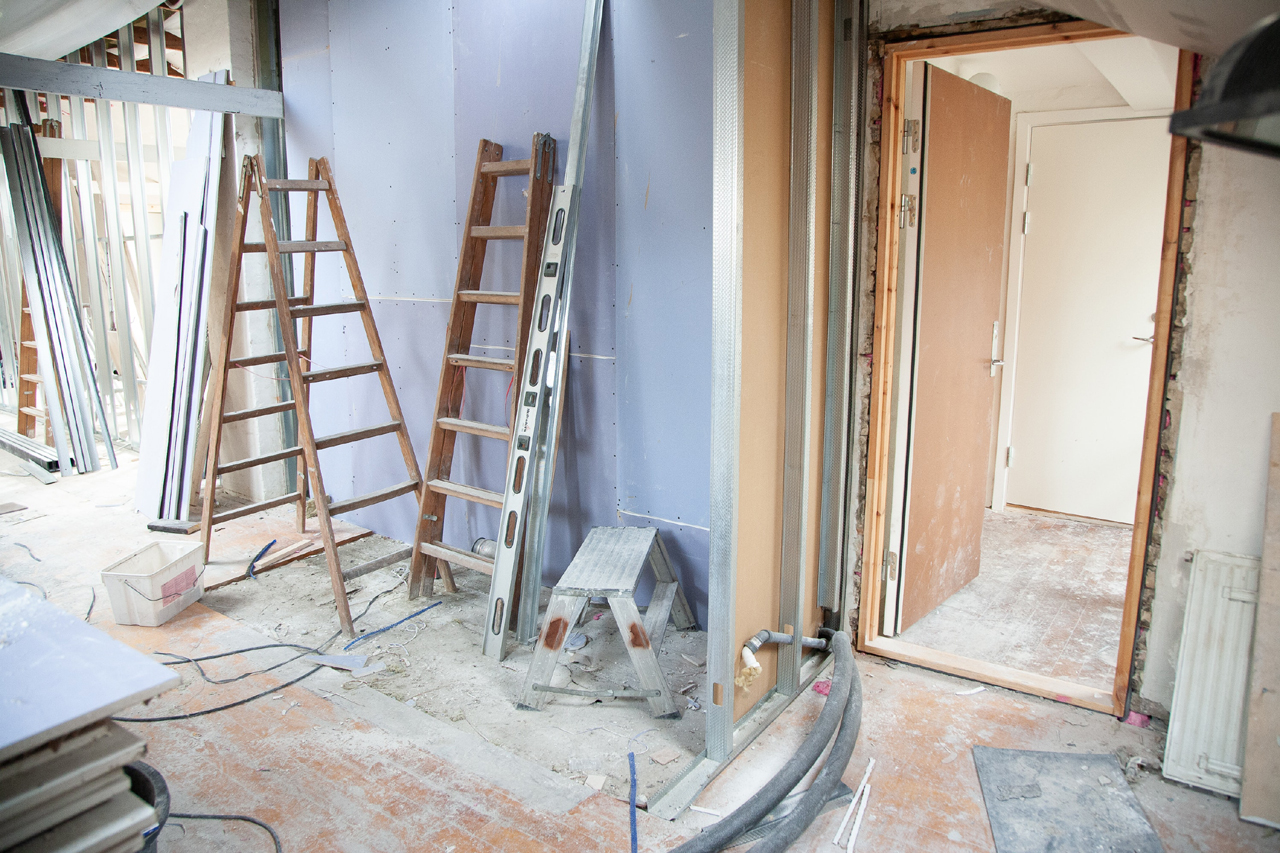By Ritchie Clapson CEng MIStructE, co-founder of propertyCEO
You may know flipping by another name—doer-upper or refurb—but whatever the name, the game is the same: find a run-down residential property, buy it below market value, then add value by knocking it into shape and redecorating it from top to bottom, and put it back on the market to sell for a healthy profit.
Many people are attracted by the idea of executing a good flip. After all, the cost of acquiring your property is likely to be fairly modest. And, as it’s only a single residence, you’re not spending an arm and a leg doing the refurbishment. Plus, it’s not going to take you forever and a day to complete the project; you should be in and out relatively quickly. According to a 2021 report by Hamptons, the average flip sold during the pandemic produced a profit of £48,000. Considering that the average salary in the UK is around £30,000, this sounds like a good way of supplementing your income, if not earning a living.
Now, I’m a chartered structural engineer and property developer by trade, and I can certainly see the attraction of flipping properties as a strategy. But property flipping probably shouldn’t be your go-to strategy this year for several reasons, mainly due to the timing.
Circumstances matter
We need to take a slightly closer look at Hampton’s £48,000 profit figure. Considering the period over which these numbers were calculated—while there was a global pandemic going on—where we saw house prices rising at a rate of close to 10% per annum. The stamp duty holiday had stoked the market and helped motivate many people to take the plunge and move house. And this was great news for flippers. If they purchased a property for £250k and sat on it for 12 months, that property would go up by £25,000 without them lifting a finger. It takes them more than halfway to Hampton’s reported £48,000 profit average.
Clearly, most of these flippers didn’t simply sit on their hands and wait, they hired builders, plumbers, and decorators, and some got stuck in themselves. Let’s assume that, of the average £48k profit, £23k came from adding value, with the remaining £25k coming from an underlying increase in the property’s value over the period they did the work. So far, so good; profit is profit, however you get it. But this year the housing market looks like it will be a different place. Most experts are predicting that house prices will fall in 2023, and while the estimates vary considerably, the general feeling is that we could see an adjustment of 5-12%, with house prices not increasing again until later in 2024.
So, let’s assume instead that this £48k flip was done this year instead of during the pandemic. If house prices reduce by 10%, then our flipper’s numbers look very different. If they buy a £250k doer-upper whose value decreases by 10% over the time they own it, their starting point is a £25k deficit. If they then go on to add £23k’s worth of value (as they did in the previous example), then they’d be looking at a net loss of £2k instead of a profit of £48k. It’s quite a change, and while there are many variables, including the property’s value, the timing of the flip, and so on, the underlying message is clear: flipping works best as a fair-weather strategy. You want to be doing it when the housing market is in good shape and values are on the rise, and the chances of 2023 seeing a strongly rising market are, by all accounts, slim.
What else could you do instead of flipping
One of the interesting dynamics of the current market situation is that what’s bad for flipping a single residential property could be very good for converting a single commercial building into multiple flats. I term this ‘small-scale development’, and while it’s only one rung up the development ladder from a flip, it can be worlds apart when it comes to profitability.
Let me explain first why the timing could be very good, and then I’ll tell you why these sorts of projects are perfectly doable even if you’ve never tackled anything like it before.
Three costs are critical to anyone that develops property:
- The value you pay to acquire the property you’ll develop
You tend to make your money when you buy, so it’s important to get good value. Converting commercial property could involve changing an office or industrial building into apartments or simply putting flats above a shop. So, what will happen to commercial property prices in 2023? No one has a crystal ball, but it would be logical to assume that prices will come down. Firstly, we have a significant oversupply of unused commercial property that’s ripe to be converted – how many empty sites have you seen in your local area? Secondly, the recession will force many businesses to close or sell their property assets. And finally, we have a lot of commercial property owners who have been holding out to get top dollar for their buildings by selling them to developers. For this latter group, the tide is going out fast. The value of their asset will be going down while, at the same time, the costs of maintaining it (mortgage rates, energy, security, business rates, etc.) are all going up. It’s hardly surprising, then, that many people are predicting a significant market dip for commercial property in this year, which would make it a great time to buy.
- How much it costs to do the development work
Labour and materials costs have certainly seen a few ups and downs recently, but while this has been happening, the housing market has been rising. However, most commentators predict that house prices will decrease by 5-12% this year, and the prospect of falling house prices has some interesting side effects. The volume housebuilders immediately start to pull back on production – they’ve no interest in releasing properties into a falling market and will want to slow things down so they can minimise any negative impact. Because these players make up a significant slice of the labour and materials market, we suddenly end up with lots of tradespeople out of work and materials not being sold. This, in turn, makes both resources a lot cheaper to buy – supply and demand. If you purchase a commercial property in mid-2023, you’ll likely be looking to get quotes from contractors in late 2023. Given that the housing market will still likely be in the doldrums then, the major housebuilders will still be going slow, allowing you to buy labour and materials far more cheaply.
- The price you sell your finished homes for
Let’s run the clock forward. If you buy a commercial property in mid-2023 and start works in late 2023 or early 2024, you should be ready to sell in late 2024 or early 2025. And this is when even the most pessimistic forecasters predict that house prices will rise again. Even the Office for Budget Responsibility (OBR) reckons house prices will increase in late 2024 and throughout 2025, so you’ll be entering a sellers’ market.
Almost chalk and cheese
The timing for doing a small-scale development could be excellent, but exactly how big is the difference between doing a flip and a commercial conversion? Well, the first difference is in the numbers; a small-scale development should net you between £100k and £500k profit, whereas a flip, as we’ve seen, is likely to target a lot less. The other key difference is in the workload. Small-scale developers don’t usually manage their own projects. Because there’s a bigger budget, they can afford to hire a professional project manager to oversee all the construction work on their behalf. It effectively moves them from the coalface to the boardroom (much less hands-on) and allows them to develop property in their spare time. It also means that, as a developer, you don’t need DIY or project management skills. You simply need to be able to oversee operations at a high level while a team of professionals does the heavy lifting for you.
The amount of money needed to invest is also very different. Many flippers will see a 25% deposit and the cost of the refurbishment work come from their own savings. For small-scale developments, most of the funding is borrowed from specialist commercial lenders who generally require the developer to put in a much smaller proportion of the required funding themselves.
Of course, any would-be small-scale developer needs to do their own research, taking into account any special circumstances in the area the project will take place, but more profit for less cash invested and less work is an attractive combination.
ABOUT THE AUTHOR
Ritchie Clapson CEng MIStructE is an established developer, author, industry commentator, and co-founder of leading property development training company propertyCEO. To discover how you can get into property development, visit www.propertyceo.co.uk
https://www.facebook.com/propertyceotraining/
https://www.instagram.com/propertyceotraining/
https://twitter.com/Property_CEO
https://www.linkedin.com/company/propertyceo
